
|

|
|
Home Site Search Contact Us Subscribe
|
|
|
The Rudy Bruner Award for Urban Excellence Marks 25 Years New Director Anne-Marie Lubenau, AIA, reflects on the past, looks to the future. By ArchNewsNow July 19, 2012 Twenty-five years ago, in July 1987, the Rudy Bruner Award for Urban Excellence (RBA) was established by the Bruner Foundation. A nationally recognized accolade for urban architecture and design, it was created by adaptive reuse pioneer Simeon Bruner, founding principal of Bruner/Cott (Cambridge, Massachusetts), in honor of his father.
The RBA evaluation criteria of “social, economic, and contextual contributions to the urban environment,” vital to building design today, were prescient in the high-flying ’80s. Each biennial, a $50,000 Gold Medal award and four $10,000 Silver Medal awards are given for completed projects that best address these measures. Nearly $1.2 million has been conferred to date, with a new group of designees to be recognized next year. (The call for entries for the 2013 RBA will be issued in September.)
“It’s thrilling to see the RBA reach the 25-year mark,” says Simeon Bruner. “When we started the program, we didn’t know how successful it would be. I think it has flourished because the way we structured the application and selection process has continually provided new ways to see and think about urban placemaking, expanding the conversation about how we make cities better.”
Anne-Marie Lubenau, AIA, took the helm as the new director of the RBA in June. Previously president and CEO of the Community Design Center of Pittsburgh, she recently completed a one-year Loeb Fellowship at Harvard University. We sat down with Lubenau to talk about the Bruner Award at this landmark moment, and her plans for it going forward.
What attracted you to your new position?
Throughout my career as an architect – both in “traditional” private practice as well as in leading nonprofit education and advocacy efforts – my work has focused on helping people understand the influence of the built environment on our lives, and participating in the design of their homes and communities. RBA interests me because it broadens the discussion about what constitutes good design. It recognizes the complexity of placemaking, including the challenging yet rewarding process of engaging diverse people and perspectives in the process. I’m excited about the opportunity to increase understanding and dialogue about this on a national level.
What does it mean for the RBA to have reached the 25-year mark?
RBA’s 25th anniversary coincides with a renewed interest in cities and urban living and increased attention to the value of place in our lives. The cumulative knowledge and experience represented by our award winners and selection committee members is impressive. From the first Gold Medal Award, Pike Place Market in Seattle, to the most recent 2011 Gold Medal Award, The Bridge Homeless Shelter in Dallas, all 67 award winners illustrate creative, innovative approaches to creating great urban places. Additionally, the award has involved 78 urban professionals on our selection committees, including 13 mayors. These people and places, along with our project case studies, are remarkable resources for students, design and development professionals, civic leaders, and policy makers working to make cities better worldwide.
What is the award’s legacy from its founder?
Simeon Bruner and the Bruner Foundation have always understood that good design is about more than form and aesthetics – that superior placemaking is not accomplished by architects alone. The RBA reflects this, opening up national dialogue about a broader, more integrated view of architecture and the value of involving other disciplines. The award has highlighted and provided support for innovative models that have been replicated in the U.S. and around the world. Our award-winning project case studies have become resources for students and policy makers alike, a rich reserve of knowledge and experience generated through our network of winners and selection committee members. None of this would have been possible without Simeon’s vision for this new tool to help cities address the complex challenges of the urban environment.
How has the award changed or advanced over the years?
When it was established, the RBA was unique in its holistic approach to evaluating projects – considering not only their physical form, but also how they respond to local context, goals, and aspirations, as well as how they contribute socially and economically to adjacent communities. This approach, along with the award criteria, has proven effective and changed little over time, enabling an ongoing process of learning – uncovering projects and ideas that challenge our assumptions about what constitutes urban design excellence. This is reflected in the diversity and innovation of the award winners, including large- and small-scale civic spaces like Millennium Park in Chicago and the Community Chalkboard and Podium in Charlottesville, Virginia; community centers like Inner-City Arts in Los Angeles; homeless shelters like St. Joseph Rebuild in New Orleans; mixed-use projects like the Santa Fe Rail Yard Redevelopment in Santa Fe, New Mexico; new infrastructure like Portland Street Car in Portland, Oregon; and Providence River Relocation in Providence, Rhode Island.
What are some of the RBA recipients doing today?
The RBA has been a catalyst for its winners, advancing their work locally and nationally. For example, Project Rowhouses (1997 Silver Medal) in Houston, started with 22 houses and has grown to include a six square block campus with 12 artist exhibition and/or residency spaces, seven houses for young mothers, office spaces, a community gallery, a park, low-income residential and commercial spaces, and the historic El Dorado Ballroom. The project has become a model for arts-based community development, and Rick Lowe, the founder, has participated in national forums on the topic. The money that comes with RBA enables recipients to not only continue their work, but also to leverage additional funding and seed new efforts. The Children’s Museum of Pittsburgh (2007 Gold Medal) invested funding from its award to continue leading efforts to improve its campus and adjacent community. These include strengthening connections to nearby neighborhood amenities through the Charm Bracelet Project and renovating the adjoining Buhl Community Park at Allegheny Square. The museum has received national awards from the American Institute of Architects, the National Trust for Historic Preservation, and the American Association of Museums.
The Bruner/Loeb Forum is a partnership between the RBA and the Loeb Fellowship Program at Harvard Graduate School of Design. Can you tell us about it?
The forum hosts interactive events across the U.S. that bring together talent and experience from these two programs to focus on issues facing our cities. Our goal is to advance national dialogue on placemaking, and to make the learning and creative thinking from RBA winners and Loeb Fellows available to practitioners nationwide. Recent events, like our 2011 Minneapolis forum and another we’re planning for Chicago this fall, have focused on how creative collaborations among artists, businesses, and local institutions can transform the economic, social, and physical infrastructure of communities.
What is your vision for the RBA going forward?
We want to bring more attention to the award and showcase the people and innovative work involved in our winning projects. My vision is that the premise of the RBA – taking into consideration not just physical form but also the economic and social aspects of placemaking – will become more integrated into architectural education and practice.
“We are excited to have Anne-Marie on board,” says RBA Founder Simeon Bruner. “Her depth of experience, enthusiasm, and talent will be critical to the future of the RBA. We look forward to expanding our base of operations, resource network, and visibility, constantly finding new ways to improve our cities.”
|
(click on pictures to enlarge) 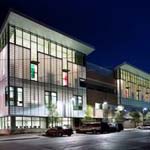 Photo courtesy Charles Smith Davis, CS Photo Bridge Homeless Assistance Center, Dallas, TX (2011). Architect: Overland Partners Architects 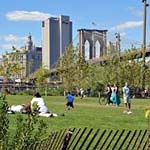 Photo courtesy Etienne Frossard Brooklyn Bridge Park, Brooklyn, NY (2011). Landscape Architect: Michael Van Valkenburgh Associates 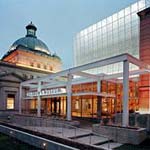 ©Albert Vecerka/Esto, photo used by permission Children’s Museum of Pittsburgh, Pittsburgh, PA (2007). Architects: Koning & Eizenberg Architecture; Perkins Eastman Architects 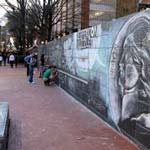 Rudy Bruner Award Community Chalkboard, Charlottesville, VA (2009). Architect: Robert Winstead, AIA; Landscape Architect: Siteworks 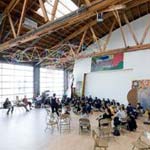 Photo courtesy Michael Maltzan Inner City Arts, Los Angeles, CA (2009). Architect: Michael Maltzan Architecture 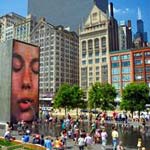 Photo courtesy Millennium Park Millennium Park, Chicago, IL (2009). Master Plan: Skidmore, Owings & Merrill; Crown Fountain: Jaume Plensa and Kruek & Sexton Architects 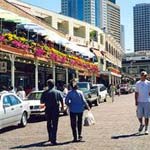 Rudy Bruner Award Pike Place Market, Seattle, WA (1987). More than a dozen architects and urban planners were responsible for portions of the Market’s renovation. 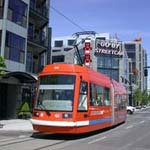 Rudy Bruner Award Portland Streetcar Project, Portland, OR (2005). Architect/Designer: Zimmer Gunsel Frasca Architects/ZGF 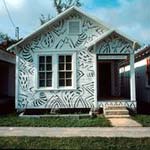 Rudy Bruner Award Project Row Houses, Houston, TX (1997). Architect: Sheryl Tucker; Landscape Architect: Urban Harvest 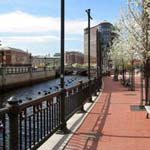 Rudy Bruner Award Providence River Relocation, Providence, RI (2003). Architect (River Relocation Project): William D. Warner Architects & Planners; Designer (WaterFire Installation): Barnaby Evans  Photo courtesy Santa Fe Railyard Community Corporation Santa Fe Railyard, Santa Fe, NM (2011). Architect: Frederic Schwartz Architects; Landscape Architect: Ken Smith Landscape Architect; Artist: Mary Miss 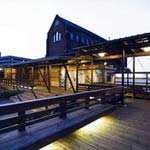 Photo courtesy St. Joseph Rebuild Center St. Joseph Rebuild Center, New Orleans, LA (2009). Architect: Wayne Troyer Architect (architect-of-record); Detroit Collaborative Design Center at University of Detroit Mercy School of Architecture |
© 2012 ArchNewsNow.com